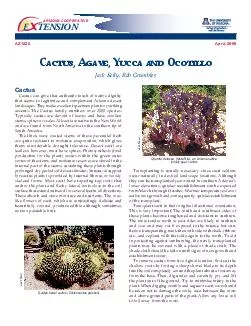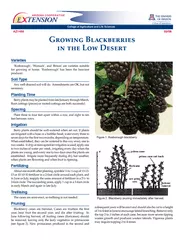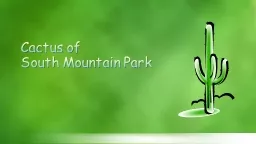PDF-ARIZON A COO PER AT IV E TE NSION Cactus Cactus can give that authentic touch o
Author : test | Published Date : 2015-03-20
They make excellent specimen plants or striking accents The Cactus family numbers over 2000 species Typically cactus are devoid of leaves and have swollen stems
Presentation Embed Code
Download Presentation
Download Presentation The PPT/PDF document "ARIZON A COO PER AT IV E TE NSION Cactus..." is the property of its rightful owner. Permission is granted to download and print the materials on this website for personal, non-commercial use only, and to display it on your personal computer provided you do not modify the materials and that you retain all copyright notices contained in the materials. By downloading content from our website, you accept the terms of this agreement.
ARIZON A COO PER AT IV E TE NSION Cactus Cactus can give that authentic touch o: Transcript
Download Rules Of Document
"ARIZON A COO PER AT IV E TE NSION Cactus Cactus can give that authentic touch o"The content belongs to its owner. You may download and print it for personal use, without modification, and keep all copyright notices. By downloading, you agree to these terms.
Related Documents














